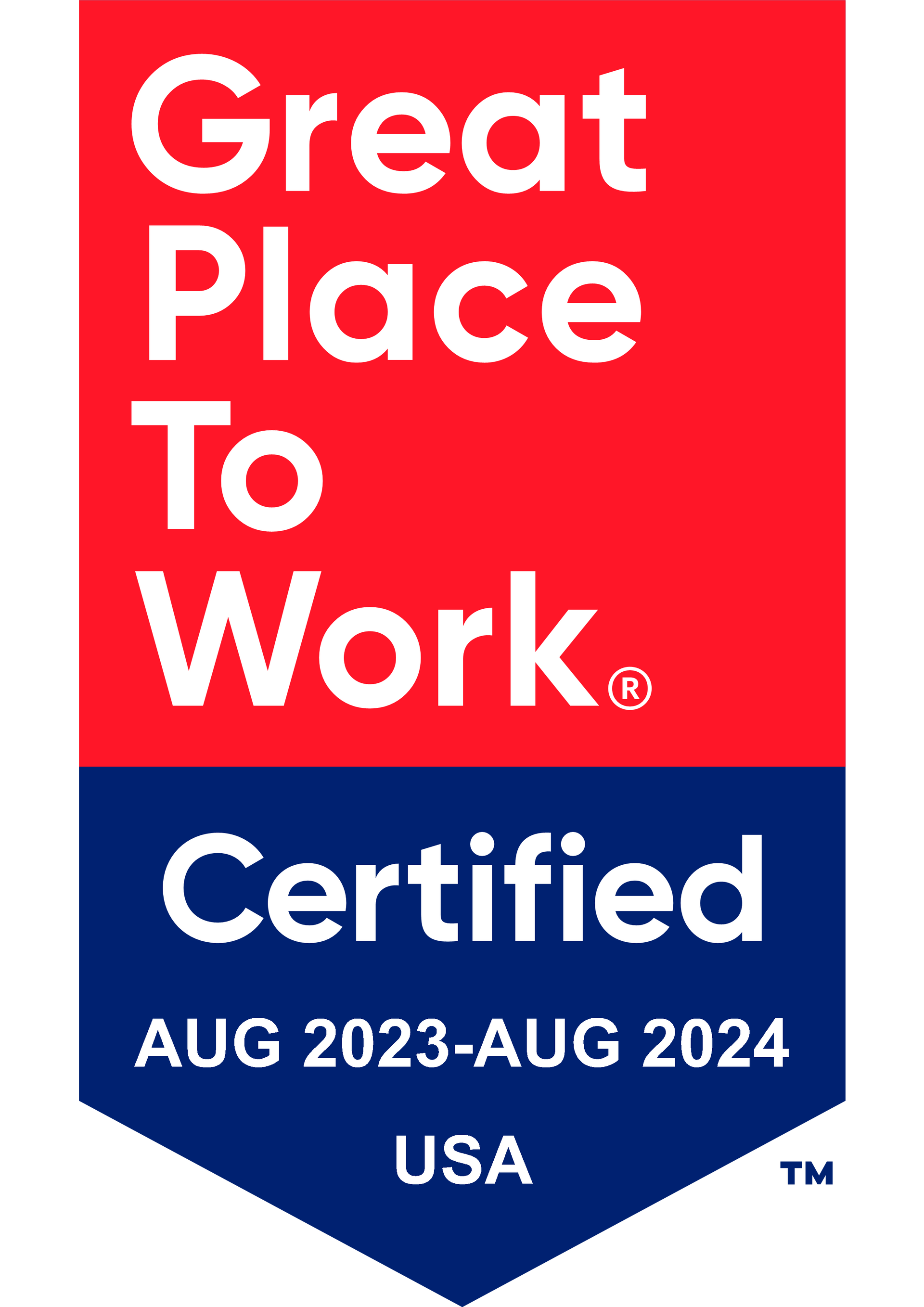Get in touch
408-366-8880
mymail@mailservice.com

Taking a Proactive and Holistic Health Approach to Well-Being
Employers were once focused on the bottom line and cost savings when it came to healthcare and employee wellness. Healthcare costs have continued to increase since 2015 by an average of 6% for large employers who do nothing to curb costs and by an average of 5% for large organizations that do implement cost savings strategies. Healthcare has a significant impact on an organization’s bottom line, so finding ways to reduce costs makes sense. Organizations are realizing, though, that cost savings should not correlate with a degradation of the health benefits offered to employees.
Cost savings isn’t the key factor when it comes to employee wellness. Employees who feel well physically, mentally, and emotionally, are happier and more productive. Per the Internal Foundation of Employee Benefit Plans (IFEBP) Workplace Wellness Trends 2019 Survey Report , 82% of employers are motivated to improve overall worker health and well-being, and only 18% hope to minimize healthcare costs. This is a huge shift away from the trends of the past few decades when cost was the driving factor.
A HOLISTIC HEALTH APPROACH FOR EMPLOYEE WELL-BEING
As the awareness that physical and mental health are not the only factors that influence an employee’s overall health, organizations have taken a broader approach to wellness. Human resources, risk managers, and benefits specialists argue that overall well-being requires a proactive and holistic approach, with hopes to get leadership’s buy-in. Per Susan Milligan in an article for The Society of Human Resource Management (SHRM), “Wellness programs have been a part of HR’s mission since the 1970s, coinciding with a general culture of fitness and emerging research on the cost of poor employee health on businesses’ bottom line.”
Fortunately, leadership teams are listening. The SHRM 2019 Family-Friendly and Wellness Benefits report showed that 20% of survey respondents increased their wellness benefit offerings from the prior year. In the IFEBP Workplace Wellness Report, 41% of respondents indicated that they offered some type of formal wellness program, and another 41% indicated that they did not offer a formal wellness program, but that they did offer various wellness-type benefits to employees and participants. Benefits experts and human resources also understand that achieving wellness and meeting goals can take time. A focus on wellness is therefore about long-term improvements in employee well-being, with the added possibility of reduced healthcare costs resulting from a healthier workforce.
A holistic approach to wellness takes into consideration an employee’s physical, mental, emotional, financial, social, and interpersonal well-being. An employer who offers a holistic approach to support employee well-being might incorporate a wellness program that provides mental and emotional health services, preventative care, financial training and support, activities to foster community and interaction, and alternative programs to reach a diverse population.
TRADITIONAL HEALTH BENEFITS
Traditional health and wellness benefits will always be important to employees, no matter the generation. We previously shared that 62% of bankruptcies are due to medical costs, according to a Harvard University Study. Employees want to know that they will be able to take care of themselves and their families in case of a medical emergency or illness.
Health benefits, such as medical insurance, dental insurance, and vision insurance, support the physical and mental well-being of employees. They also help to reduce stress over medical concerns and medical expenses, further supporting mental and emotional well-being.
MENTAL HEALTH AND EMOTIONAL WELL-BEING
Approximately two-thirds of the one in five U.S. adults who will have a mental illness won’t seek treatment, per the National Institute of Mental Health (NIMH). The stigma of talking about mental health and emotional well-being has diminished in recent years, as companies have begun to recognize the effect that poor mental health and emotional well-being can have on health and productivity.
As part of a holistic wellness approach, organizations are incorporating mental health support that goes beyond what is offered by their Employee Assistance Program (EAP) or traditional medical benefits. Contracted local in-house mental health experts and free or low-cost telecounseling services are options employers have begun to incorporate as part of a holistic wellness program.
FINANCIAL WELL-BEING
Financial well-being is important to all generations in the workplace. In the 2019 Stress in America survey, 60% of respondents reported that money was a significant stressor. In a Bank of America Merrill Lynch workplace benefits report, approximately four out of 10 employees devote three or more hours each week to personal finances.
A large percentage of the workforce is not financially healthy. When employees are concerned about their finances, it doesn’t just impact them outside of working hours. Financial stress can hurt work productivity and mental health. Unmitigated stress can also lead to potentially debilitating physical symptoms.
Financial support can be in the form of direct payments, such as offering forms of payment for student loan debt, or it can be in the form of classes, seminars, or webinars. Companies may, for example, provide education on budgeting, retirement, creating a will or trust, money management, stretching your dollar, starting a college fund for children, or buying a home. Some companies even offer personal money coaches to help employees achieve financial peace.
ERGONOMICS FOR PHYSICAL AND MENTAL WELL-BEING
For decades, employers have focused on ergonomic positioning at the desk to help reduce work-related injuries. It’s a good idea for organizations to keep up with new trends and recommendations, as proper ergonomics support physical and mental health.
Sitting for long periods at a time can increase the risk of obesity, early death, diabetes, and heart disease. Per a report from PubMed, the average American’s life expectancy increased by two years by reducing sitting to three hours each day. Another PubMed report indicated that standing improves energy, which may increase productivity.
Standing desks are a positive and relatively new trend in workplace wellness programs. The SHRM report showed that 60% of organizations surveyed now provide or subsidize switching from a sitting to a standing desk.
ADDITIONAL WELLNESS PROGRAM CONSIDERATIONS
Wellness programs are being expanded not only to focus on physical health, but also to incorporate preventative care, mental health support, interactive programs, and financial support for a holistic approach.
Some corporations incorporate health fairs into their wellness programs to provide education and preventative services, such as blood pressure screenings or health surveys. Other companies have included on-site clinics for primary care and mental health services. They also support employees with schedules that make it challenging to go to a clinic outside of business hours.
The SHRM report indicated that 21% of organizations now offer quiet rooms for personal use, such as for prayer and meditation, as part of their wellness programs. Fitness centers, equipment, and classes are offered by 61% of organizations, with 32% provided off-site and 29% provided on-site. Organizations may also offer company-provided activity trackers and fitness bands as part of their wellness programs.
Alternative programs that some corporations have added to their employee well-being arsenal, as reported by Sanam Yar in a New York Times article, “include yoga, meditation services, mindfulness training, sound baths, hypnotherapy, vision-boarding, and energy consulting.” These types of programs have proven beneficial, and are often requested by Millennials and Gen Zers.
Wellness programs that work for all employees need to keep demographics in mind. A holistic wellness program will incorporate components that pique the interest of all demographics within a workforce. Younger generations might appreciate yoga access, for example, while older demographics might appreciate a class on preparing for retirement.
A HOLISTIC HEALTH APPROACH TO SUPPORT A PANDEMIC
COVID-19 has created unprecedented challenges. Organizations, employees, and families are being impacted in a way that they have never been before. Social distancing has caused sudden, dramatic changes for businesses and individuals alike. To remain healthy and productive, companies have had to become resourceful.
For employers who already have a holistic wellness program, it’s important to encourage employees to use all of the resources available to them. For employers who do not already have a holistic wellness program, a holistic approach can still be taken to support employee well-being throughout the pandemic.
A holistic approach to wellness not only means helping employees achieve well-being but also providing them with the tools they need to do their jobs effectively. In times like these, organizations must ensure that employees have the tools they need to work from home, including laptops and communication and work management technology.
It’s also important that employees and remote teams remain connected. A healthy human connection is an aspect of holistic well-being. Organizations can help employees not feel so isolated by making an extra effort to encourage them to reach out to each other, scheduling regular video conference team meetings for “face-to-face” interaction, and ensuring that managers are reaching out to their teams to check on them regularly.
Communication is another way to support holistic well-being during a pandemic. Because uncertainty can be stressful, clear directions are important. The more organizations communicate expectations, pay statuses, and procedures, the more calm employees will be.
Organizations can also support employees through a pandemic by ensuring that they have unimpeded access to their benefits. It’s also a good idea to remind employees of the wellness program benefits you do offer that might support them, such as mental and emotional health support, EAPs, and digital wellness applications.
Any financial peace of mind that can be provided to employees is beneficial. People are concerned about losing their jobs and supporting their families.
Staying current on COVID-19 news and policies is also essential for organizations to support their employees and their business. To make this easier, we’ve created a COVID-19 resource center.
HOLISTIC HEALTH AND WELLNESS PROGRAMS ARE WORTH IT
It’s easy to determine the cost spent per employee on wellness programs, but it can be challenging to evaluate the return on investment of wellness programs in dollar amounts. Based on a UnitedHealthcare survey, organizations spend $742 on average per year on wellness for each employee. Per the IFEBP survey, leaders who can evaluate the return on investment of wellness report a $1 to $4 return for each dollar spent.
Even with the lack of evidence on monetary returns and healthcare cost reductions, human resource experts, benefits providers, and leaders who support wellness programs consider them highly beneficial. At KBI, we find that holistic wellness programs have a positive impact on employee productivity, morale, and overall well-being.
We also see that employers can more easily attract and retain top talent in a competitive market when wellness is promoted as part of the company’s employee value proposition. Having a holistic program in place also helps organizations move through challenging times, like the pandemic we’re currently experiencing.
DEVELOPING HOLISTIC WELLNESS PROGRAMS
Developing a holistic wellness program requires time and hard work. You're not alone. Our knowledgeable team of benefits brokers will work with you to develop a holistic wellness program to meet your needs.
Together, we’ll come up with a plan to determine what your employee population is seeking, look at what benefits you currently have in place that could be expanded upon or done away with, and decide what additional wellness benefits are available to you. We’ll then work with you from the design stage to the initial launch and beyond to make any necessary future adjustments.
If you are ready to explore the travel insurance plans we offer, contact us today by submitting our online contact form or calling us at
408.366.8880. We look forward to working with you!
Services
Latest Thinking




